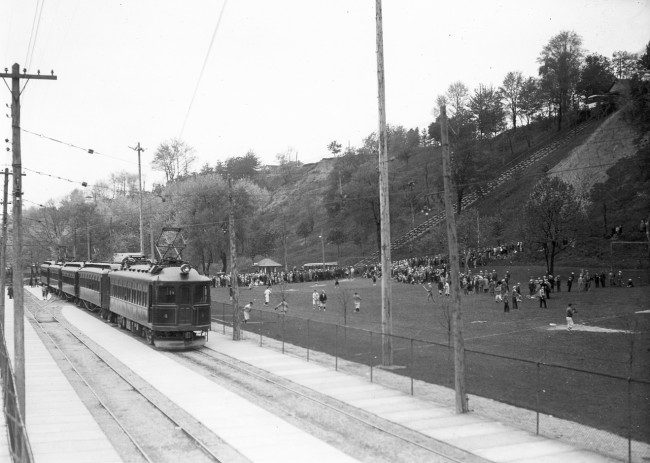Inducted 2008
The London and Port Stanley Railway was sponsored by a group of London business men who saw the potential of rail transport between London and Port Stanley.
The L&PS Railway opened for business on Sept. 25, 1856. The 24 mile line was used to carry goods and people. The L&PS Railway did not provide the anticipated revenue. Consequently, in 1872, the line was leased to the Great Western Railway. Although, the GWR was absorbed by the Grand Trunk Railway, operation on the L&PS rail line continued until the lease expired in 1892. At this time, the City of London, by obtaining voting power on the bonds, took over control of the L&PS Railway.
In 1893, the Lake Erie and Detroit River Railway arranged a twenty year lease of the line with the City of London. By 1910, most of the freight tonnage was Pennsylvania coal. There was a high volume of excursion traffic to the lake during the summer months.
When the lease ended, the City of London assumed operation of the L&PS Railway, and established the London Railway Commission. The purpose of the Commission was to construct, equip, maintain, manage, control and operate the L&PS Railway. Sir Adam Beck was the first chairman. Concurrently, he held the position of chairman of the Hydro Electric Power Commission and was a fervent supporter of electric radial railways. Under his tutelage, the L&PS Railway was totally rebuilt and electrified. The new electric railway began operation on July 1, 1915. Service ended in 1965.
The L&PS Railway was sold to Canadian National for an exchange of industrial properties in London. The Port Stanley to St. Thomas portion of the line is now operated by Port Stanley Terminal Rail.
The former L&PS line is one of the oldest rail lines in Canada. The 150th anniversary was celebrated in 2006.


